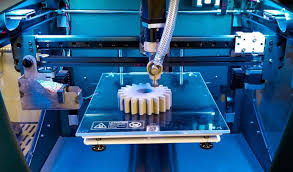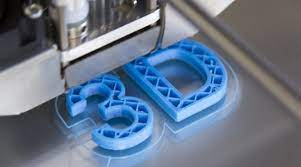Researchers at Stanford College in the USA have actually established a brand-new high-speed micro-scale 3D printing modern technology – roll-to-roll continual fluid interface manufacturing (r2rCLIP), which can publish 1 million incredibly great and personalized micro-particles per day. This accomplishment is anticipated to advertise the growth of biomedicine and other fields. The pertinent paper was released in the latest concern of “Nature” on the 13th.
(3d printer)
Microparticles produced by 3D printing technology are widely utilized in areas such as drug and vaccination distribution, microelectronics, microfluidics, and complex production. Nevertheless, mass personalization of such bits is incredibly tough.
r2rCLIP is based upon the continuous liquid interface production (CLIP) printing technology developed by Stanford College’s DiSimone Laboratory in 2015. CLIP utilizes ultraviolet light to strengthen the material promptly into the wanted shape.
The leader of the current research, Jason Kronenfeld of the Disimone Lab, clarified that they first fed a piece of film right into a CLIP printer. At the printer, numerous forms are simultaneously published onto the movie; the system after that continues to clean, treatment, and get rid of the forms, all of which can be customized to the wanted form and product; ultimately, the movie is rolled up. The whole procedure, for this reason the name roll-to-roll CLIP, allows automation of uniquely shaped particles smaller sized than the width of a human hair.
(metal powder 3d printing)
Researchers stated that before the introduction of r2rCLIP, if you intended to publish a batch of large bits, you needed to process it by hand, and the process progressed slowly. Currently, r2rCLIP can generate approximately 1 million bits each day at unmatched rates. With new innovations, they can currently quickly develop microparticles with more intricate forms making use of a range of products, such as ceramics and hydrogels, to create tough and soft particles. The difficult particles can be utilized in microelectronics producing, while the soft particles can be used in drug delivery within the body.
The research group explained that existing 3D printing modern technology requires to find a balance between resolution and rate. Some 3D printing technologies can produce smaller sized nanoscale fragments however at a slower rate; some 3D printing technologies can manufacture big items such as shoes, home things, maker components, football helmets, dentures, and listening devices, yet they can not print Fine microparticles. The new technique locates an equilibrium in between making speed and penalty range.
About Kmpass
Kmpass is committed to technology development, applications of nanotechnology and new material industries, with professional experiencein the nano-technology research and development and the application of materials.especially for 3d printing powder, 3d printing metal powder, 3d printing powder supplier, 3d printing for titanium powder. As a leading nano-technology development and product applications additive manufacturer, Kmpass dominates the markets. If you need high quality 3d printing service, please feel free to contact us.
Inquiry us

